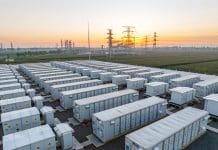Knauf Insulation Ltd discusses the requirements of accurately installing insulation…
Installing insulation accurately is critical in delivering real thermal performance, where the intended performance is achieved, in all constructions.
It is already well recognised that accurate detailing and the installation of insulation at junctions between building elements, and where penetrations through the cavity wall occur, is necessary. If the detailing is poor or the installation does not precisely follow the detail as designed, extra heat loss will occur. Indeed the Building Regulations and Standards in England, Wales, Scotland and Northern Ireland include measures to be taken in order to evaluate heat loss through thermal bridging and for the confirmation of accurate delivery.
The dependency for accurately installing insulation within plane building elements is less well recognised, but of significantly greater importance. Delivering real thermal performance within a masonry cavity wall construction requires the insulation to be tightly fitted to the inner leaf of the cavity, as well as the individual insulation slabs being tightly butted together. This is to ensure that there is no air cavity between the insulation and the inner leaf and to prevent cold air penetrating the insulation layer. If the insulation is not fitted to satisfy these dependencies, then it is certain that heat will bypass the insulation through a series of airflow mechanisms induced by thermal gradients, and/or differential pressures in the cavities induced by the wind incident on the building.
The thermal bypass mechanisms have been understood for many years by building physicists and have been evaluated in tests that simulate masonry walls insulated to what would be regarded as satisfactory standards. Indeed, extra heat losses of up to 4 x higher than intended have been observed.
Knauf Insulation’s Earthwool® DriTherm Full Fill Cavity Slabs are fit tolerant and have been engineered so that accurate installation, which respect the dependencies for real thermal performance, is achievable every time. The insulation solution has been designed to be the same width as a building’s cavity and has a naturally resilient nature that accommodates normal building tolerances so that it will remain in tight contact with the inner leaf.
As the Earthwool DriTherm Slabs are 455mm wide, which is 5mm greater than the standard vertical wall tie spacing, it means that the slabs will always be tightly butted to one another. What’s more, the slab will yield to accommodate, rather than be disrupted by the profile of standard wall ties. The combination of these two features minimises the possibility of gaps at the horizontal slab joints, and when the coursing of the block work is correct, there will be a compression joint between the slabs. The same compression can be achieved at the vertical joints between slabs and where the slabs are in contact with cavity closers, cavity stops and any other interruptions or junctions in the cavity. When Earthwool DriTherm needs to be cut to size, its ability to accommodate a degree of compression at its joint means that it can be cut with a positive tolerance, so that a tight joint can be achieved every time.
Undeniably, achieving real performance requires insulation solutions that can accommodate the acceptable vagaries in construction and still enable the installation to perform as intended.
Knauf Insulation Ltd
info.uk@knaufinsulation.com
Please note: this is a commercial profile













